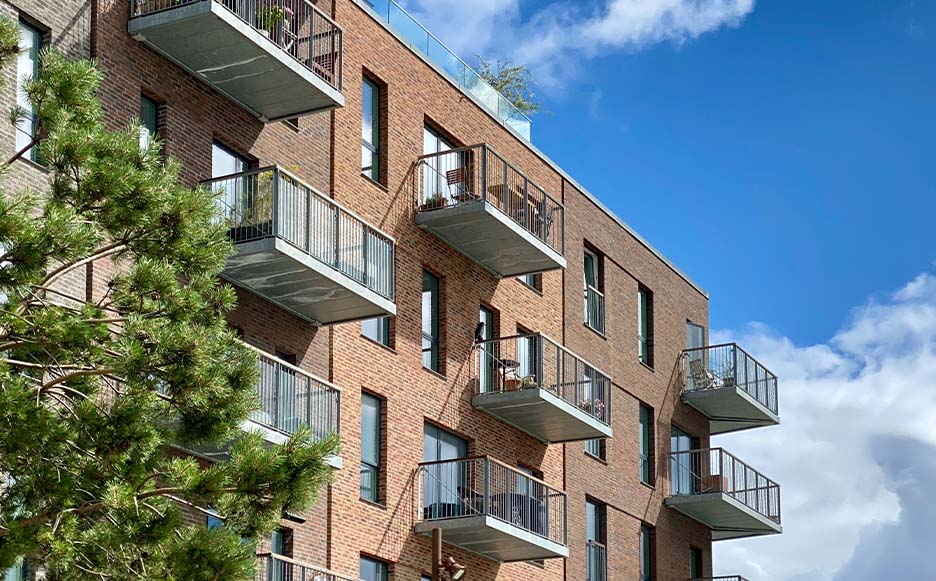Rental inspection programs are key to ensuring safe living conditions for tenants in your community. But not all inspection programs are made equal. When inspection programs fall short, it’s the residents and citizens that suffer the consequences.
In the best cases, property owners take an active role in the maintenance and upkeep of their buildings, making inspections more of a formality than a necessity. But to be sure, there are cases where inspections are the only safeguard against buildings falling into disrepair.
With such significant consequences, ranging from the health and safety of residents to possible urban decay and blight, cities must prioritize their rental inspections, implementing a more proactive approach to these programs.
Ad-hoc vs. Proactive Rental Property Inspections
Historically speaking, ad-hoc, or complaint-based, inspections have made up the majority of local rental inspections. However, these types of programs often fail to address small issues before they become significant problems, resulting in large-scale reconstructions that cost the city and landlords time and money
Ad-hoc: These inspections occur after a tenant or local citizen files a complaint about an issue with a rental property. Once the complaint has been filed, local officials visit the property to inspect the issue and provide a resolution. Typically, this will result in code enforcement warnings or citations that require property owners to make critical updates in a set amount of time. In many cases, these inspections are focused only on the unit(s) and issues identified in the complaint filed and do not include an inspection of the whole building.
Proactive: These inspections, also known as periodic inspections, occur on a regular basis (timing of which is decided upon by local government) and report on the entirety of a building, providing property owners with a list of necessary maintenance or upkeep needed in order to remain compliant with state/local mandates.
The Problem with Ad-hoc Inspections
Wouldn’t complaint-based inspections help us focus on those buildings or properties most in need of inspections instead of wasting time with buildings that are already up to code?
It’s easy to follow that line of thinking, and many communities have and continue to do so to this day. However, for the complaint-based process to function effectively:
- The tenant must be aware of the problem and how to file a report to start the inspection process.
- The tenant must be willing to do so.
While many might assume these two factors don’t present any significant roadblocks to the process, the opposite is actually true. It’s often the second factor that presents the biggest challenge. Due to a fear of negative backlash, many tenants decide not to report issues with their residence and instead, choose to simply “live with it.”
Compounding this issue is the fact that when tenants do report an issue and an inspection is warranted, more often than not, the inspection is focused solely on the issue at hand. What’s the problem with that? Nothing, if the issue can be resolved at face value.
But let’s say one tenant reports a mold issue in their apartment. The inspection agency comes and reports on the issues, and tells the landlord to fix the mold issue in that unit. Problem solved, right? Maybe, but maybe not. Say the mold issue is part of a larger issue with the plumbing, or that it’s an issue for units not included in the complaint (and therefore not inspected). In this case, the tenant or others are at continued risk.
And that’s where the problem lies.
Why Proactive Inspections are the Future
Unlike complaint-based inspections, which only occur once an issue is apparent to a resident or landlord, this type of inspection takes a much more active role, keeping buildings up to code and avoiding unnecessary issues in the future.
The advantages of consistent periodic inspections benefit not only the tenants, but the landlords and the city itself. Benefits include:
- Costs – Simply put, it is much less costly to repair a small problem than it is to undergo major construction on a property. Ensuring buildings stay up to code on a regular basis, means less money being spent on expensive and large-scale repairs.
- Health and Safety – This one might be obvious, but we include it for a reason. The health and safety of a community’s residents are one of, if not the top, priority for any government. Keeping residences up to code keeps your residents safe and healthy.
- Decreased Chance of Urban Blight – Urban Blight or Decay occurs when buildings within a specific area begin to break down and are abandoned. The effects are often widespread, impacting local economies and government. Providing proactive inspections can help to ward off the threat of blight and keep your community and its economy healthy.
Powering Your Proactive Rental Property Inspections
Finding the right technology to power your proactive inspection program isn’t just nice to have, it’s a necessity. In order to reach full compliance on all properties within your community, it’s essential to run your program as efficiently as possible. And that means incorporating software to support your inspection and follow-up processes.
But like inspection programs, not all software is created equal. What does a good rental inspection software solution look like?
It should include:
- End-to-end inspection management, allowing for easy inspection, violation notice, and updates.
- Integrated payment processes to help recover your costs and make any violation payments easy for the end-user.
- Mobile inspection capabilities to make in-the-field processes that much more convenient and effective for your team.
- A platform approach that provides a robust set of features, easy extensibility, and low maintenance requirements.
By adopting a proactive approach to rental inspections and empowering your team with software that streamlines your inspection program, you can dramatically increase the impact you create for your community.
Ready to learn more about how smart software solutions can benefit city workers, tenants, and property owners alike? Check out this guide.



